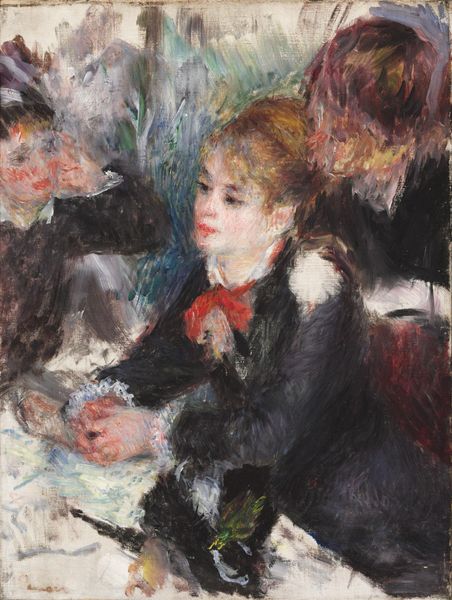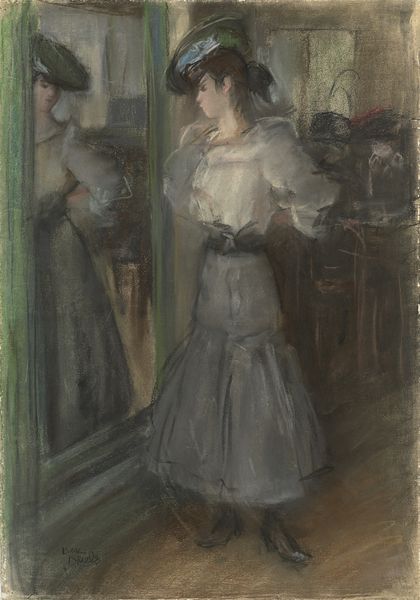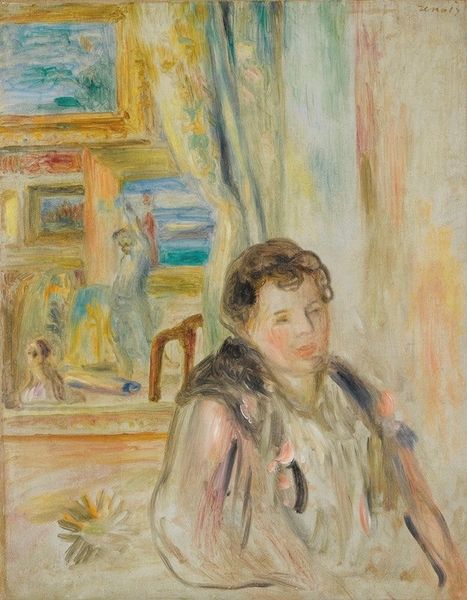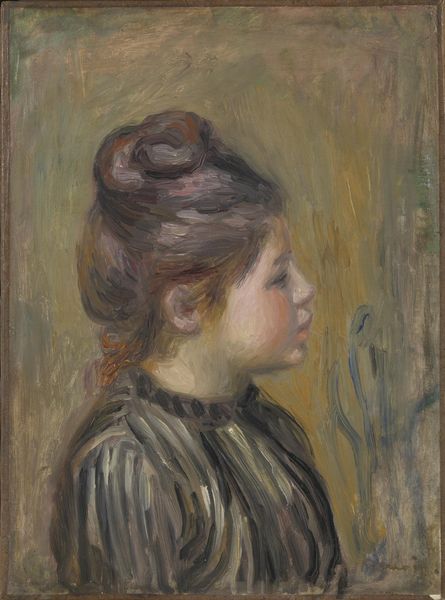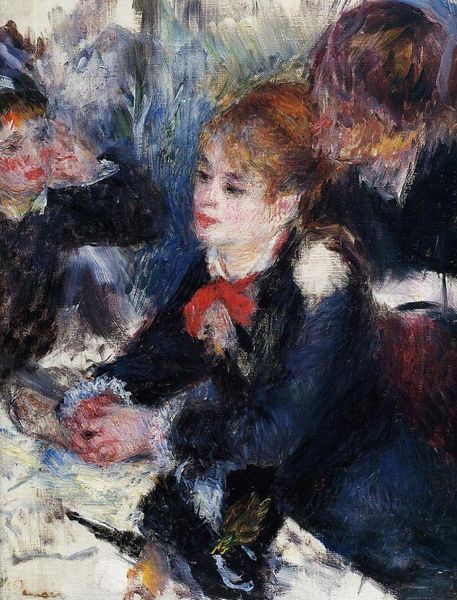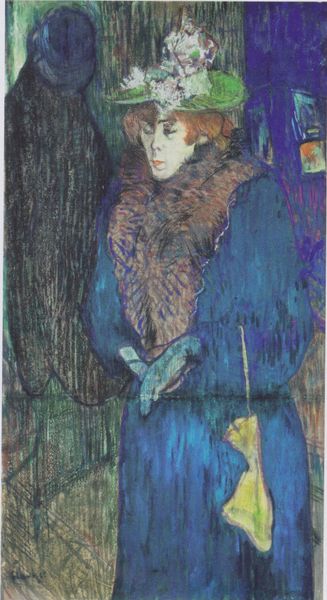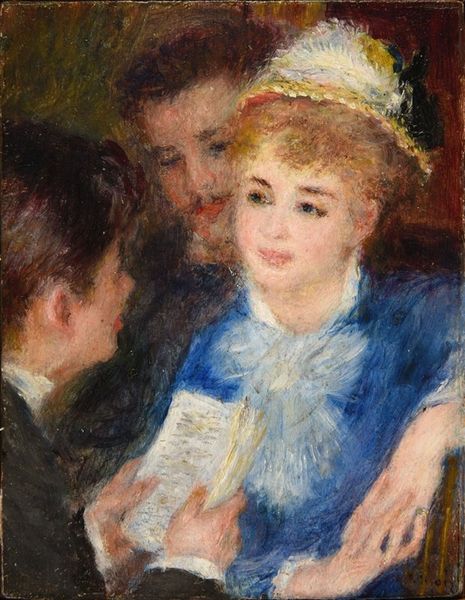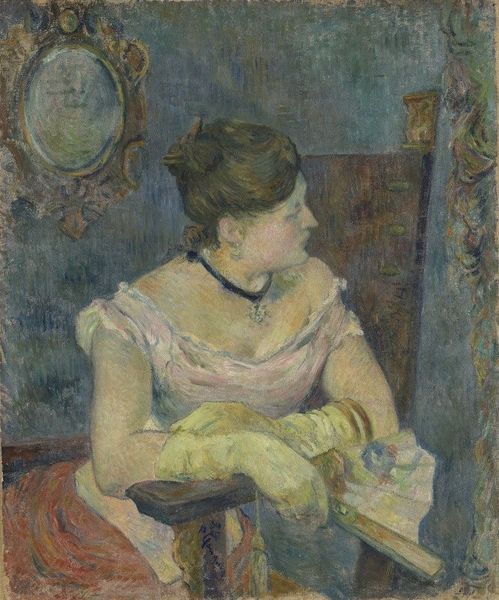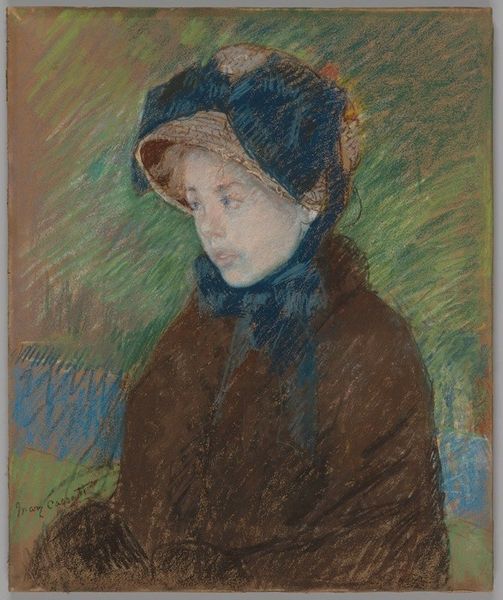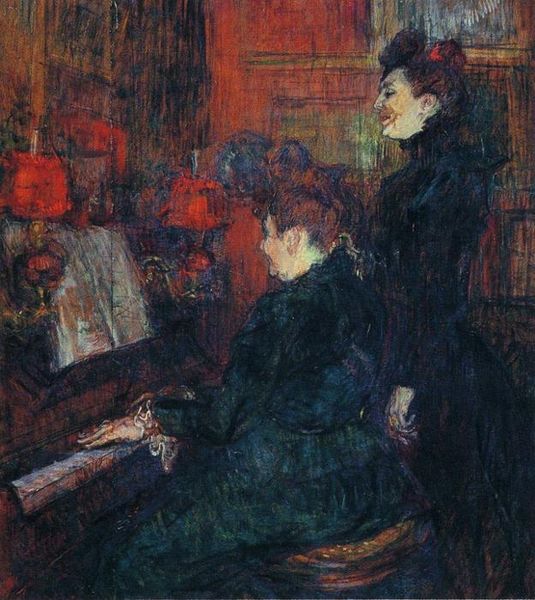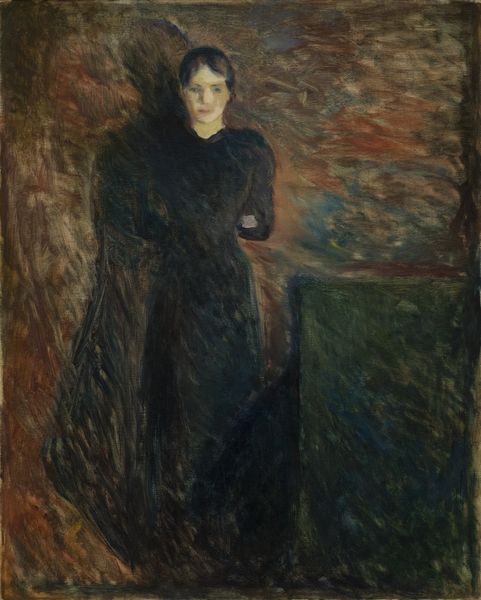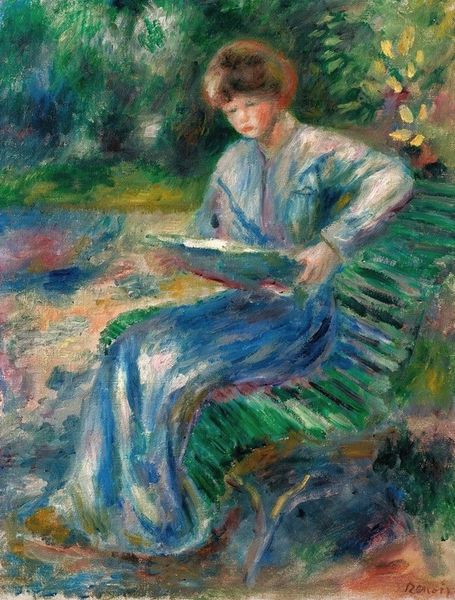
Copyright: Public Domain: Artvee
Editor: So here we have Renoir's "The Milliner," created in 1877 using oil paint, pastel, and watercolor on paper. It's a rather subdued portrait; the colors are soft, and the overall impression is one of quiet contemplation. What strikes you when you look at this piece? Curator: The figure embodies the burgeoning identity of the working woman within Impressionist circles. Millinery, a crucial fashion industry segment, often relied on women’s craftsmanship. Consider how the hat itself, though unseen, casts a potent symbol; it represents not mere adornment but also skilled labor, commerce, and a degree of social mobility. Her youthful face contrasts with this complex trade; what emotional reverberations do you observe in this tension? Editor: I see a certain reserve in her expression, perhaps a blend of youthful hope and the weight of her profession. Does the book she holds have a specific meaning? Curator: Absolutely. The book suggests literacy and access to knowledge. Is it a ledger? A novel? The possibilities themselves suggest the expansion of the young working woman's roles. Furthermore, her attire—a dark jacket with a subtle flower—projects an understated elegance, underscoring the complexities within this seemingly simple portrait. Editor: That makes me see so much more in what initially seemed like a quiet painting. The details really do hint at a larger societal narrative. Curator: Precisely. The painting, with its quiet symbolism, creates ripples that connect with wider shifts of identity. A simple image reflecting the world. Editor: I’ll definitely be looking at portraits with different eyes now, thinking about the stories hidden within the symbols. Curator: An image speaks volumes. That's its enduring power.
Comments
No comments
Be the first to comment and join the conversation on the ultimate creative platform.
